Fairly rare but a great find. It is almost impossible to distinguish the taste and texture of this mushroom compared to the Penny Bun (Boletus edulis).
Home / Mushroom Guide /
Bronze Bolete
Bronze Bolete
| Mushroom Type | |
| Common Names |
Bronze Bolete (EN), Queen Bolete, Dark Cep, Cap Tyllog Efydd (CY), Borowik Ciemnobrązowy (PL), Bronzos Vargánya (HU) |
| Scientific Name |
Boletus aereus |
| Synonyms |
Boletus edulis f. aereus, Tubiporus edulis subsp. aereus, Tubiporus aereus |
| Season Start |
Jul |
| Season End |
Oct |
| Average Mushroom height (CM) |
6-12 |
| Average Cap width (CM) |
7-15 |
Please note that each and every mushroom you come across may vary in appearance to these photos.
Cap
7-15 cm, usually dark brown to slightly red-brown. The caps starts a bit velvety and orange coloured but soon becomes smooth, dark and can have a finely cracked surface.
Pores
The sponge like pores start white to cream and mature to yellow. The pores do not change colour much when bruised or handled.
Stem
7-15 cm long, 2-4 cm diameter. Fairly robust and barrel shaped with a very fine brown mesh like pattern (reticulation) over a lighter brown background and can sometimes be slightly pinkish towards the middle of the stem.
Habitat
Ectomycorrhizal with various broad leaf trees, particularly Beech and Oak.
Possible Confusion
Summer Bolete (Boletus reticulatus), pictured, has a slightly velvety, pale brown to brown yellow cap. Its reticulation is paler than the stem, but still rather brownish.
Penny Bun (Boletus edulis) has a shiny, greasy cap, often with white margin. Its stem is pale, and the reticulation is white at the apex of the stem.
Pine Bolete (Boletus pinophilus) has a more red, shiny, greasy cap, often with paler (whitish) margin. Its reticulation is white at the apex of the stem, more brownish close to the base.
Bay Bolete (Imleria badia) has a thinner, unmeshed stem but as this is a good edible it is not a bad mistake to make.
Spore Print
Olive brown. Subfusiform.
Taste / Smell
Strong, like a Penny Bun.
Frequency
Rather rare in Britain.
Other Facts
It is still commonly called as Queen Bolete, regardless the very same common name is applied to a different species, Boletus regineus in North America which was described as a new species only in 2008. Phylogenetic studies showed it is rather closely related to our Pine Bolete (Boletus pinophilus) and only a more distant cousin of our Bronze Bolete (Boletus aereus).


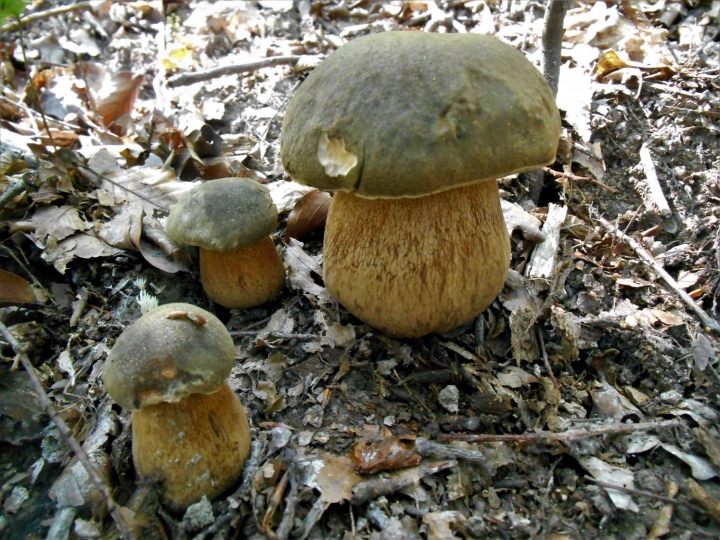
















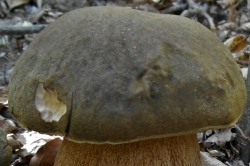
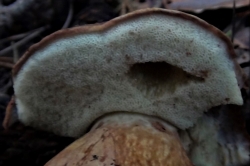
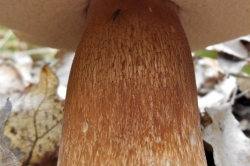
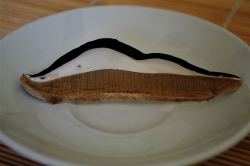
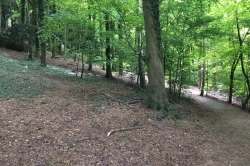
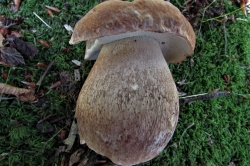
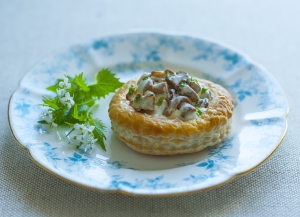
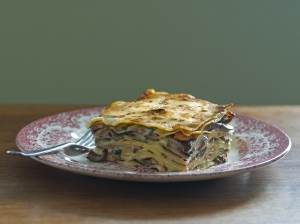






Leave a Reply